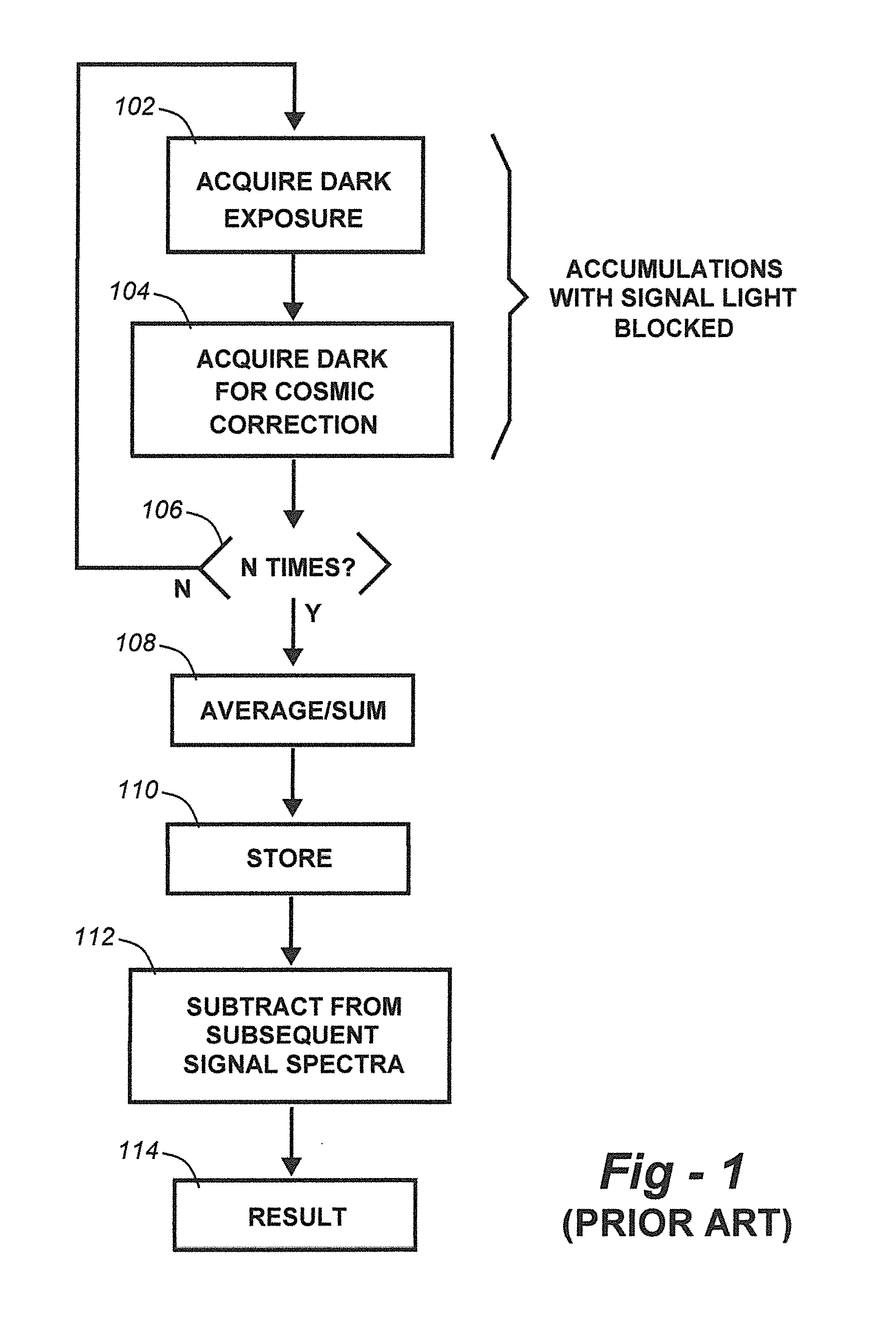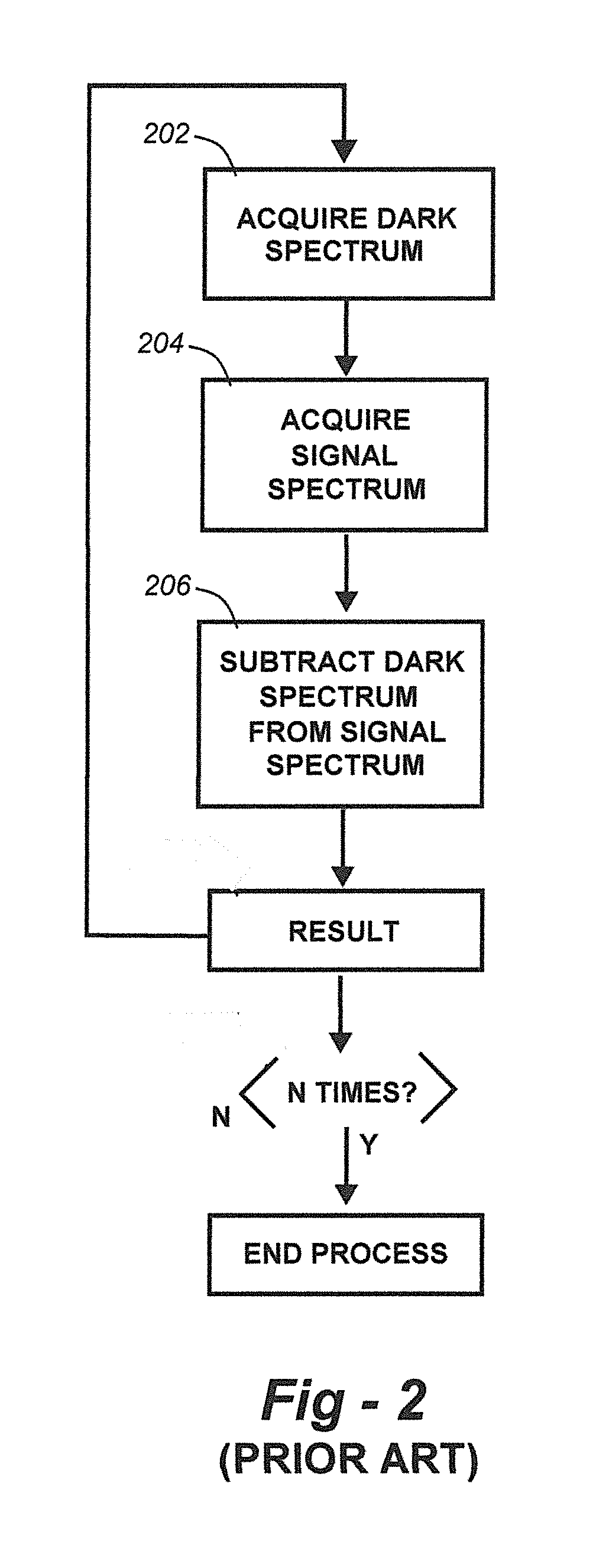Methods for collection, dark correction, and reporting of spectra from array detector spectrometers
- Summary
- Abstract
- Description
- Claims
- Application Information
AI Technical Summary
Benefits of technology
Problems solved by technology
Method used
Image
Examples
Embodiment Construction
Method 1—Interleaved Dark Exposure
[0020]In accordance with this embodiment of the invention, diagrammed in FIG. 3, a collection cycle comprises dark exposure 302, light exposure 304, repeat dark for cosmic correction check 306, repeat light for cosmic correction check 308, and generate one accumulation by subtracting the cosmic-corrected dark exposure from the cosmic-corrected light exposure (310). These steps are repeated N times through decision block 312 for each accumulation. At 314 the accumulations are summed or averaged to build up the target SNR for the application.
[0021]This improvement doubles the fastest possible cycle time and better matches the true dark for light collection periods to the stored dark as compared to Standard Practice 2. This can be significant in applications where dark current can drift significantly within a long single data cycle of N accumulations. Data reporting cycle time is 2T, equivalent to Standard Practice 2, but provides more accurate trackin...
PUM
 Login to View More
Login to View More Abstract
Description
Claims
Application Information
 Login to View More
Login to View More - R&D
- Intellectual Property
- Life Sciences
- Materials
- Tech Scout
- Unparalleled Data Quality
- Higher Quality Content
- 60% Fewer Hallucinations
Browse by: Latest US Patents, China's latest patents, Technical Efficacy Thesaurus, Application Domain, Technology Topic, Popular Technical Reports.
© 2025 PatSnap. All rights reserved.Legal|Privacy policy|Modern Slavery Act Transparency Statement|Sitemap|About US| Contact US: help@patsnap.com



